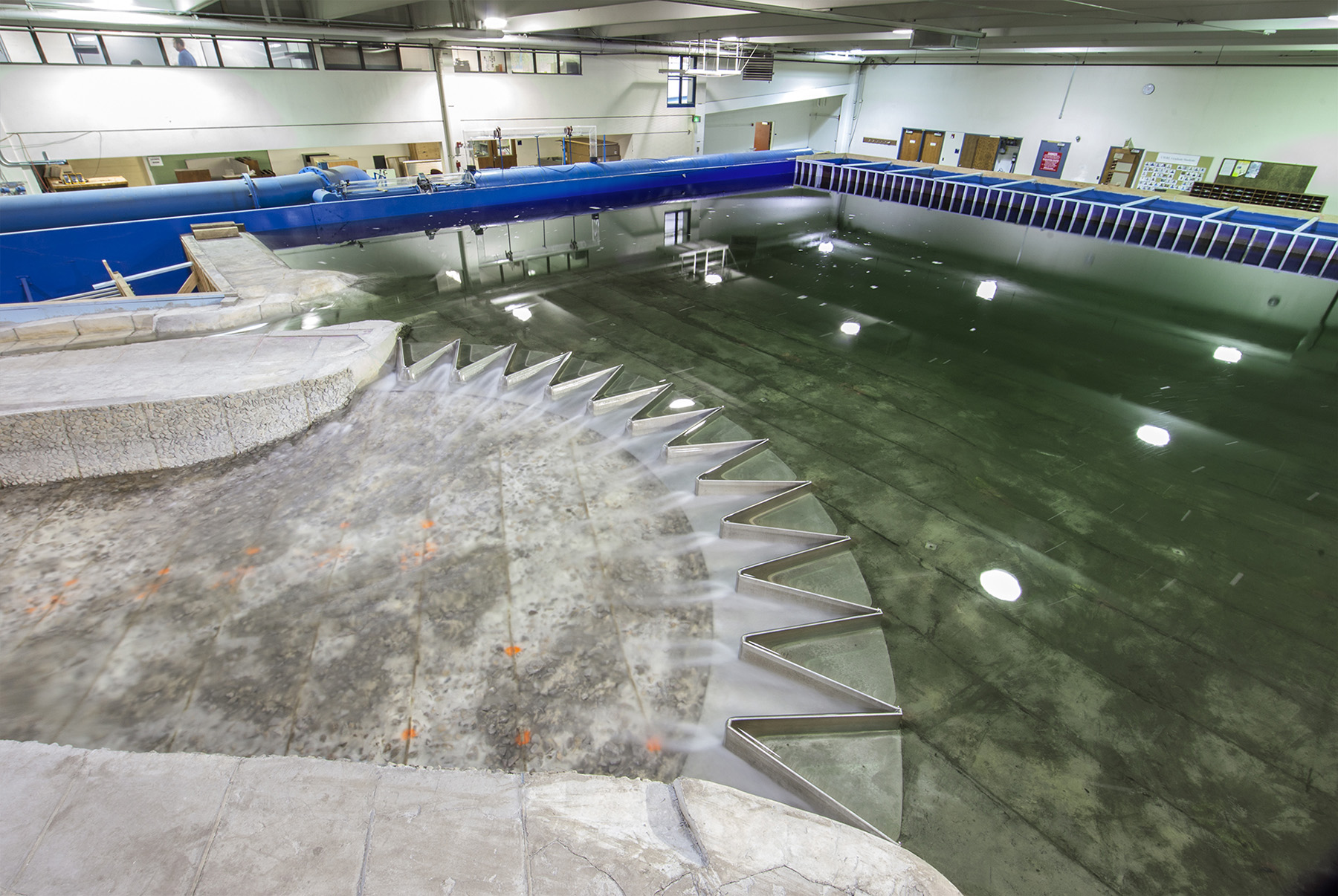By Robert L. Reid
The Utah Water Research Laboratory, within the Civil and Environmental Engineering Department of Utah State University, has often worked with the U.S. Army Corps of Engineers on upgrades to existing Corps dams, spillways, and other facilities. So when the Corps’ Sacramento (California) District approached the laboratory in 2014 about a new spillway for the Isabella Lake Dam Safety Modification Project to greatly increase the spillway’s discharge capacity, the laboratory knew just what to give it, says Blake Tullis, Ph.D., F.EWRI, the associate vice president for research at Utah State and a professor of civil and environmental engineering.

“We said we have this paper on arced labyrinth weirs that you might want to consider,” explains Tullis. The paper, “Arced Labyrinth Weirs” by B. M. Crookston, Ph.D., P.E., M.ASCE, and Tullis (Journal of Hydraulic Engineering, Vol. 138, Issue 6 (June 2012)), was based on applied research the water lab had conducted a few years prior to the Corps’ request. After reviewing the research, the Corps felt that a zigzagging weir could be the right solution for the Lake Isabella dams.
To verify that assumption, the Corps asked the water lab to develop a large-scale physical model to test the labyrinth weir design.
The Corps had already developed a basic design for an arc labyrinth weir and tested it with computer models, says Victor Ozuna, P.E., a resident engineer in the Sacramento District office. But a physical model can be an improvement over digital versions because “it gives our hydrologic engineers the chance to see the water flows and interpret if there are any issues with the design,” Ozuna explains.
Reduced uncertainty
At a 1:45 scale, the physical model the water lab developed for the Corps was one of the largest it had ever constructed, Tullis says. The model measured 76 ft long by 55 ft wide and during tests could send 36.8 cfs of water cascading through the model weir and down the scaled downstream channel, representing the proposed maximum discharge of 506,000 cfs for the actual dams.
To construct the model, the Corps provided the water lab with topographical data on the site, including bathymetric data on the reservoir, as well as the geometry of the existing spillway and discharge channel and the dimensions of the proposed new weir and channel, says Tullis. Constructed by water lab staff and civil engineering students over a roughly eight-week period in late 2014, the model used aluminum for the accordionlike folded walls of the weir and a mix of sand and gravel, capped with a veneer of mortar, for the terrain features, Tullis says.
The depth of water in the model ranged from 6 in. to 10 in. at the weir to roughly 4 ft in the model reservoir, while the 4 ft of freeboard that the Corps wanted to maintain on the actual dams was only 1 in. deep on the model, Tullis says.
Following a series of tests, the water lab’s model helped prove that the labyrinth weir itself would work at Lake Isabella, but the design of the downstream channel excavation had to be changed, Tullis says. Once that aspect was adjusted, the system performed well.
“The goal of physical models is to reduce uncertainty,” Tullis explains. If you do not know how well a particular design will work, you might have to build more, excavate more, and take other expensive measures to improve the safety and performance of hydraulic systems. But a model can help “fine-tune your designs to build just what you actually need.”
Robert L. Reid is the senior editor and features manager of Civil Engineering.
This sidebar first appeared in the July/August 2023 print issue of Civil Engineering as “A Model Approach.” To read more in-depth coverage about the Isabella Lake Dam Safety Modification Project, see “Zigzagging weir helped solve safety issues at 2 California dams.”



